Blogging Sax Rohmer’s The Golden Scorpion, Part Two – “The Statement of M. Gaston Max”
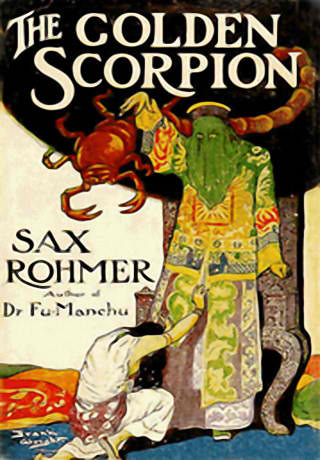
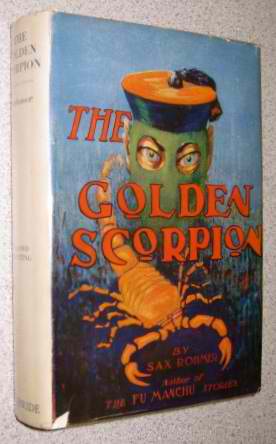 Sax Rohmer’s The Golden Scorpion was first printed in its entirety in The Illustrated London News Christmas Number in December 1918. It was published in book form in the UK the following year by Methuen and in the US in 1920 by McBride & Nast. Rohmer divided the novel into four sections. This week we shall examine the second part of the book, “The Statement of M. Gaston Max” which comprises nine chapters.
Sax Rohmer’s The Golden Scorpion was first printed in its entirety in The Illustrated London News Christmas Number in December 1918. It was published in book form in the UK the following year by Methuen and in the US in 1920 by McBride & Nast. Rohmer divided the novel into four sections. This week we shall examine the second part of the book, “The Statement of M. Gaston Max” which comprises nine chapters.
Rohmer chose to follow the formula he utilized successfully with The Yellow Claw (1915) by starting the narrative at a crucial early stage before revealing the principal character’s earlier involvement in the plot and then unexpectedly bringing Gaston Max into the proceedings and having him relate, over the course of several chapters, a lengthy background story that helps connect the dots for both reader and protagonist.
Max’s account begins some months earlier when he was serving as head of security to the Grand Duke Ivan during his visit to Paris. The French detective became concerned with the Grand Duke’s torrid affair with the exotic Egyptian dancer, Zara el-Khala, while staying in Paris. Surveillance work uncovers her connection to a mysterious individual known as The Scorpion. Max is unable to learn anything else of significance about the dancer’s background. After she unexpectedly fails to turn up for her performance one night, the detective learns she has suddenly left Paris. That same night, Grand Duke Ivan is struck ill and dies.
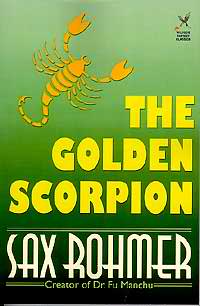
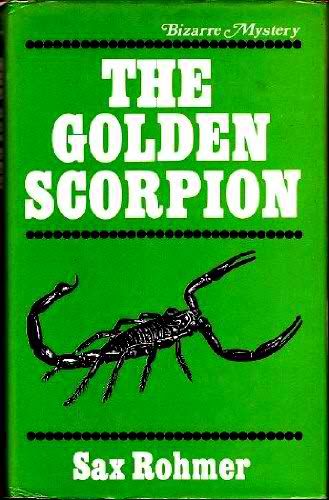 Max interviews the Grand Duke’s valet, but there is nothing to suggest anything suspicious about the events surrounding the statesman’s sudden death. The detective thinks no more of it until, several weeks later, Professor Ericksen passes away under nearly identical circumstances. His passing is rapidly followed by similar unexpected deaths for Admiral Rackney, Van Rembold, and Sir Frank Narcombe. The men were statesmen, military men, scientists, engineers, and surgeons possessed of some genius in their fields.
Max interviews the Grand Duke’s valet, but there is nothing to suggest anything suspicious about the events surrounding the statesman’s sudden death. The detective thinks no more of it until, several weeks later, Professor Ericksen passes away under nearly identical circumstances. His passing is rapidly followed by similar unexpected deaths for Admiral Rackney, Van Rembold, and Sir Frank Narcombe. The men were statesmen, military men, scientists, engineers, and surgeons possessed of some genius in their fields.
Along with the identical unexplained deaths, Van Rembold had asked a scientist friend whom Max later interviews if he knew of any tribes that worshiped scorpions. This peculiar question is enough to convince Max that somehow this unknown Scorpion individual is the key to the inexplicable deaths robbing the world of so many geniuses. Max sets out for England to investigate the recent death of Sir Frank Narcombe, only too aware that Zara el-Khala left Paris for London shortly before Sir Frank’s passing.
Max has the Surete warn Scotland Yard to report anything at all having to do with a scorpion. The first move the detective makes in London is to pick up the trail of Zara el-Khala’s shady associates. This leads him to witness a barroom brawl in which a man drops a golden scorpion figurine onto the floor. Max retrieves the figurine and returns it to its owner, but notes the menacing looks he gets from all concerned in doing so. Knowing he is on to something, but not understanding its meaning, the detective follows one of the men and watches as he also passes a golden figurine to another contact. Intrigued, Max continues on his quest to unravel the mystery of the Scorpion.
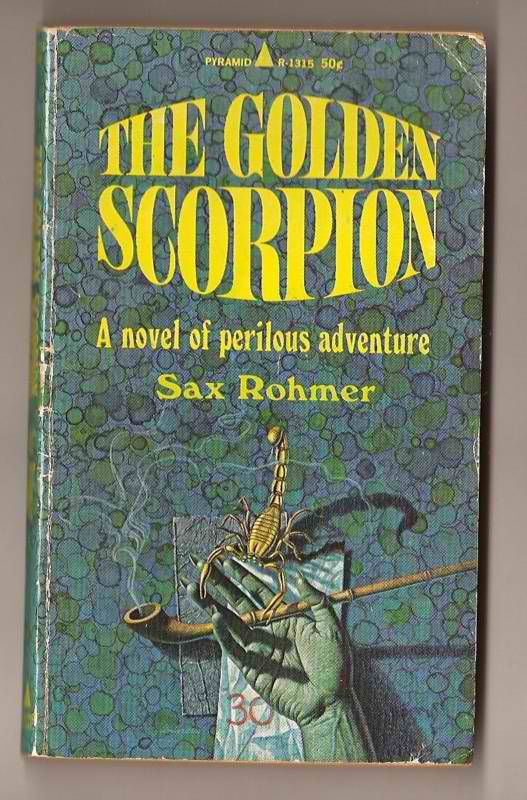
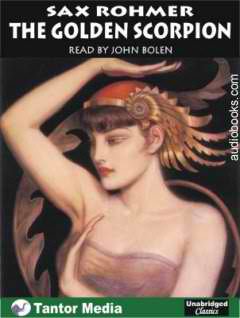 The Surete informs Max that one of the men from the barroom brawl has been murdered and his corpse recently fished out of the Seine. The detective adopts the identity of taxi driver Charles Malet and trails the last man he saw with the golden figurine to Limehouse. It is at this point that he first befriends Dr. Keppel Stuart, who believes him to be a simple taxi driver. This acquaintance proves fortuitous, for “Charles Malet” soon realizes that his quarry is suspicious of him and his life is now in jeopardy as a result.
The Surete informs Max that one of the men from the barroom brawl has been murdered and his corpse recently fished out of the Seine. The detective adopts the identity of taxi driver Charles Malet and trails the last man he saw with the golden figurine to Limehouse. It is at this point that he first befriends Dr. Keppel Stuart, who believes him to be a simple taxi driver. This acquaintance proves fortuitous, for “Charles Malet” soon realizes that his quarry is suspicious of him and his life is now in jeopardy as a result.
The next evening, in his guise as the taxi driver, Max drinks with his quarry and brags that soon he will be able to retire after he obtains the final bit of information regarding the Limehouse underworld before publishing his secret document and making his fortune. The man pretends bewilderment at the detective’s words, but when Max reaches his cab, he narrowly avoids being stabbed to death. Fleeing on foot, he reaches Dr. Stuart’s residence. He breaks into the doctor’s study, cuts out a small piece of cardboard and places it in an envelope which he seals with a Chinese coin he finds in the doctor’s collection. Thus having completed his charade, he rings the doctor’s front doorbell and tells him a tale about the parcel being left in his cab by his last fare of the night and how he wishes Dr. Stuart to keep it locked up in his study for safekeeping until he is able to retrieve and collect his finder’s fee.
From there, Max faces his fate, returning his cab to the garage where he is set upon. A vicious fight ensues and Max overcomes his would-be assassin and murders the man. A truly grisly sequence of gallows humour from Rohmer ensues as Max drives the cab to the docks and is stopped by a constable because of a burned-out headlight. Max convinces the constable the dead man in the backseat is a drunken passenger sleeping it off and the constable allows him to pass. The detective switches clothes with the corpse and dumps his body in the Thames. Returning home, Max discards forever his identity of Charles Malet, taxi driver, and is content to allow the unknown Scorpion to believe he has killed Charles Malet so that Max may continue to seek to unravel the mystery.
Max rents the house across the street from Dr. Stuart. Rohmer stretches credibility considerably by having Max first endanger Keppel’s life by letting the villains believe confidential information is hidden in his study and then even more ridiculously suggests that coincidentally the house across the road is vacant to allow the detective to stakeout the doctor’s house and observe who comes to claim the sealed envelope. Of course, the reader should have already guessed that the mysterious Zara el-Khala is none other than Mademoiselle Dorian aka Miska, the girl who has likewise captured Keppel Stuart’s heart. Max tracks Zara from Dr. Stuart’s residence to Limehouse and while he loses her, he realizes he is finally closing in on the Scorpion’s lair.
Gaston Max’s statement concludes with the French detective having revealed all to his old friend, Inspector Dunbar, and to poor Keppel Stuart. The doctor is heartbroken to learn that his beloved Mademoiselle Dorian is involved with a Limehouse gang far worse than he feared as the second part of The Golden Scorpion concludes. Rohmer has tied up all loose ends in the narrative (cheating a bit along the way to smooth over a discrepancy or two in Max’s narrative) and leaving the reader eager to see how the mystery of the Scorpion will unravel in the third instalment.
William Patrick Maynard was authorized to continue Sax Rohmer’s Fu Manchu thrillers beginning with The Terror of Fu Manchu (2009; Black Coat Press). A sequel, The Destiny of Fu Manchu was published earlier this year by Black Coat Press. Next up is a collection of short stories featuring an Edwardian detective, The Occult Case Book of Shankar Hardwicke and a hardboiled detective novel, Lawhead. To see additional articles by William, visit his blog at SetiSays.blogspot.com